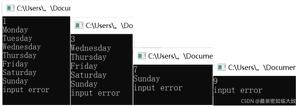C ++中的私有成员和受保护成员
C ++中的类具有公共,私有和受保护的节,其中包含相应的类成员。
不能从类外部访问私有数据成员。只能通过类或友元函数访问它们。默认情况下,所有类成员都是私有的。
类中的受保护成员类似于私有成员,但是派生类或子类可以访问它们,而私有成员则不能。
演示类中的私有成员和受保护成员的程序如下:
示例
#include <iostream>using namespace std;
class Base {
public :
int a = 8;
protected :
int b = 10;
private :
int c = 20;
};
class Derived : public Base {
public :
void func() {
cout << "The value of a : " << a;
cout << "\nThe value of b : " << b;
}
};
int main() {
Derived obj;
obj.func();
return 0;
}
输出结果
上面程序的输出如下。
The value of a : 8The value of b : 10
现在,让我们了解以上程序。
在Base类中,数据成员分别是a,b和c,它们分别是公共的,受保护的和私有的。给出的代码片段如下。
class Base { public :
int a = 8;
protected :
int b = 10;
private :
int c = 20;
};
派生类继承基类。该函数func()打印a和b的值。它不能打印c的值,因为c的值是Base类专用的,并且不能在Derived类中访问。给出的代码片段如下。
class Derived : public Base { public :
void func() {
cout << "The value of a : " << a;
cout << "\nThe value of b : " << b;
}
};
在该函数中main(),创建了Derived类的对象obj。然后func()调用该函数。给出的代码片段如下。
int main() { Derived obj;
obj.func();
return 0;
}
以上是 C ++中的私有成员和受保护成员 的全部内容, 来源链接: utcz.com/z/340867.html





